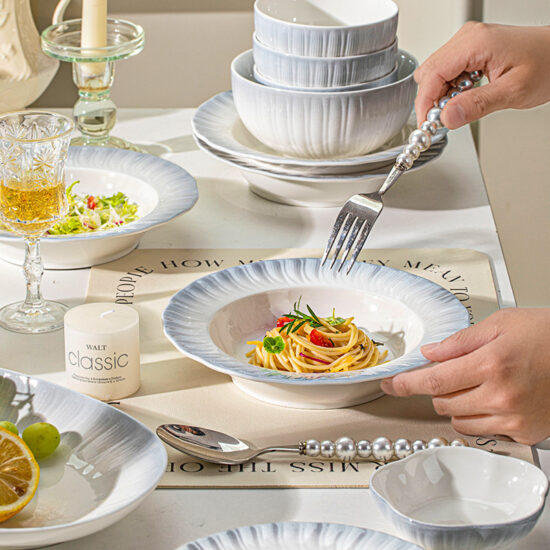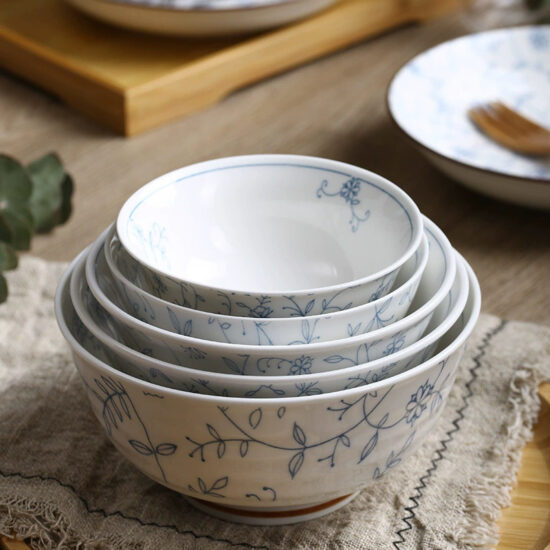bob@nbdho.com
Bone China, Porcelain, and Earthenware: Key Differences Explained for Buyers
Bone China, Porcelain, and Earthenware: What’s the Difference?
When it comes to ceramic tableware, the terms bone china, porcelain, and earthenware are often used interchangeably—but they refer to very different materials with unique characteristics. Whether you’re a buyer, distributor, or custom brand owner, understanding these differences can help you make better product decisions.
🦴 1. Bone China
Definition:
Bone china is a type of porcelain that includes bone ash (usually from cattle), mixed with kaolin and feldspar. It is known for its high levels of whiteness and translucency.
Key Features:
-
Elegant & Translucent: Appears delicate but is actually strong.
-
High Whiteness: Often has a creamy, soft white tone.
-
Lightweight but Durable: Surprisingly chip-resistant.
-
Premium Pricing: Due to complex production and refined materials.
Best For:
High-end restaurants, luxury tableware collections, wedding gifts, upscale hotels.
🏺 2. Porcelain
Definition:
Porcelain is made from refined clay (kaolin), fired at high temperatures (typically above 1,200°C). It is the most common material used in modern ceramic tableware.
Key Features:
-
Dense & Non-Porous: Resistant to water absorption and staining.
-
Smooth Finish: Glossy or matte surface.
-
White or Slightly Bluish Tint: Offers a clean aesthetic.
-
Durable: Suitable for both household and commercial use.
Best For:
Everyday dinnerware, restaurant use, personalized printing, OEM/ODM products.
🌍 3. Earthenware
Definition:
Earthenware is one of the oldest ceramic types, made from natural clay and fired at lower temperatures (around 1,000°C). It’s more porous and heavier than porcelain.
Key Features:
-
Thicker & Heavier: Has a rustic feel.
-
More Absorbent: Needs to be glazed to become waterproof.
-
Earthy Tones: Often brown, red, or cream-colored.
-
More Fragile: Can chip or break more easily than porcelain.
Best For:
Rustic-style restaurants, artisan collections, handmade-look custom orders.
📊 Comparison Table
| Feature | Bone China | Porcelain | Earthenware |
|---|---|---|---|
| Firing Temperature | ~1,200–1,250°C | ~1,200–1,400°C | ~1,000–1,100°C |
| Strength | High | High | Medium |
| Weight | Light | Medium | Heavy |
| Water Absorption | Very Low | Low | High (unless glazed) |
| Translucency | High | Medium | None |
| Price Range | $$$ | $$ | $ |
🛒 Which One Should You Choose?
-
For luxury branding → Bone China
-
For versatile, professional tableware → Porcelain
-
For rustic or handmade aesthetics → Earthenware
Your choice depends on your target market, product use, and design goals. For wholesalers and custom buyers, understanding the materials can also impact pricing, MOQ (Minimum Order Quantity), and shipping needs.
🔧 Need Custom Ceramic Tableware?
We offer OEM & ODM services across bone china, porcelain, and earthenware. Whether you’re a retailer, restaurant owner, or distributor, we can help you source or design the perfect ceramic bowl to match your needs.
Contact us today to discuss your custom project or bulk order!

